


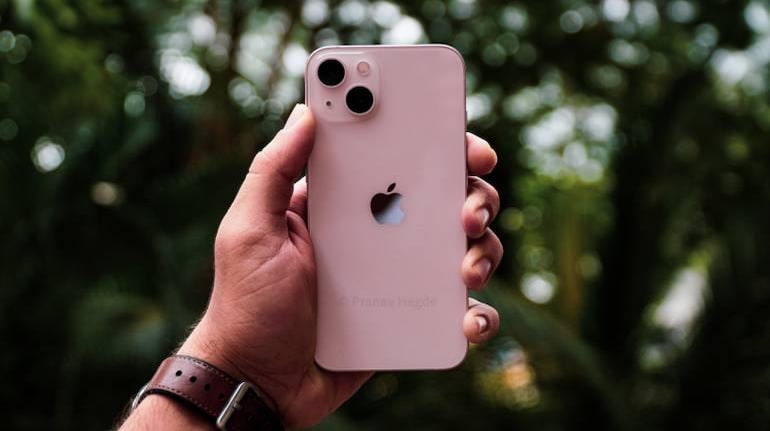
Apple iPhone models have been the best-selling smartphones worldwide over the past few quarters. Be it the iPhone XR, the iPhone 11 or even the iPhone 12, these non-Pro iPhones have been a popular pick among consumers. A possible reason for the popularity could be the base iPhone model offering many features found on the Pro models at a much more affordable price. The iPhone 13 launched in India comes with a price tag of Rs 79,900. While the pricing is the same as last year’s iPhone 12, Apple has bumped up the storage to 128GB and made some key improvements under the hood. After using the device for nearly 10 days, here is our iPhone 13 review.
Apple iPhone 13 reviewPerformance and battery lifeWe thought of getting the obvious out of the way first in our iPhone 13 review. Like the iPhone 13 Pro and iPhone 13 Pro Max, the vanilla 13 also gets the new A15 Bionic chip under the hood. While it shares the six-core CPU with two high-performance cores and four efficiency cores, the vanilla models come with a four-core GPU. Apple made several claims that boast of the processor’s capabilities. The iPhone 13 is claimed to offer 50 percent faster CPU performance and 30 percent better GPU performance compared to the competition. For the average Joe who scrolls through social media, makes calls or even plays games on the smartphone, the iPhone 13 offers more than enough power. The raw power this processor has will be useful to offer smooth performance for at least three to four years.
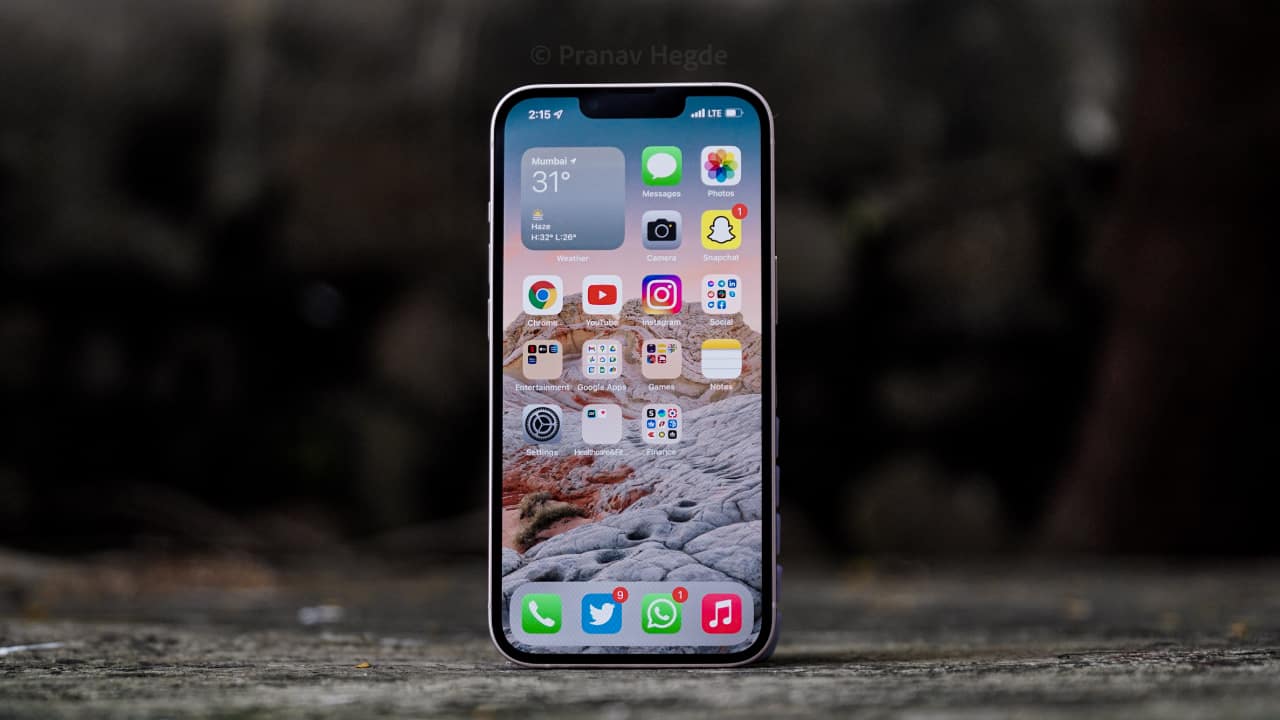
During my iPhone 13 review period, I played games like Battlegrounds Mobile India (BGMI), Call of Duty Mobile and Asphalt 9. Goes without saying, playing games on the iPhone 13 is really “fun”. I say fun cause there’s no hint of lag while playing these games. I would have loved to see support for a higher refresh rate on these games but then Apple has kept that exclusive for the Pro models this year.
The most notable upgrade has been in the battery life. Apple said the iPhone 13 offers up to 2.5 hours of more battery life than the iPhone 12. The company has packed a bigger battery inside the iPhone 13 but chosen to keep the exact capacity details under wraps.
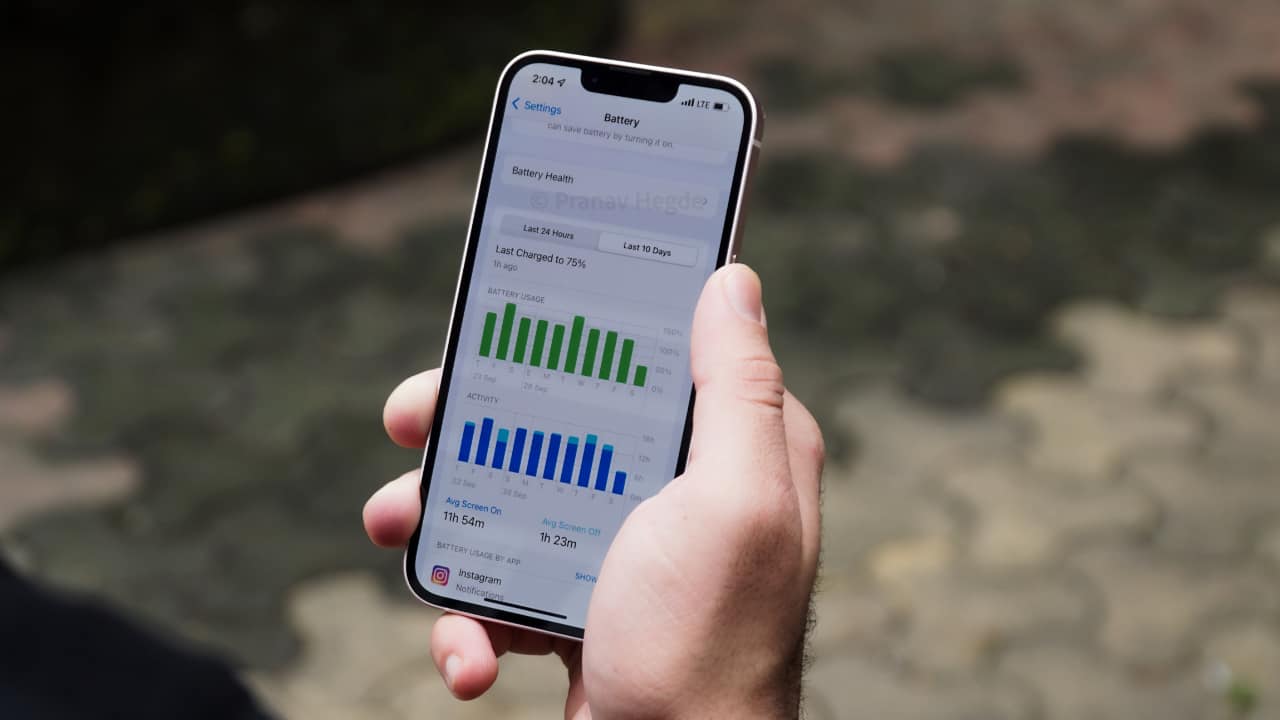
I used the iPhone 12 (Review) extensively for a good part of 2020 and 2021 and the phone offered nearly 6-6.5 hours of screen-on time (SoT). Based on the claims, I was expecting around 8-8.5 hours of SoT. The claim proved to be valid as my iPhone 13 review unit gave me over nine hours of SoT on a single charge. On the given day, I played BGMI for roughly 30 minutes and attended multiple Zoom calls for nearly two hours. Of course, there was social media browsing too.
Close to 9.5 hours of SoT. That is a lot of phone time but super impressive battery backup@Apple#iPhone13https://t.co/rf8WULFBMdpic.twitter.com/uB04Q96Y0d— Pranav (@PranavHegdeHere) September 24, 2021
On days where I recorded test videos or clicked photos, the average battery life was still around 7.5-8 hours. Of course, the battery life would vary based on the amount of time you would spend recording videos or playing games but this does give you a rough idea. While a bigger battery is obviously the reason for better SoT, I also assume that the A15 Bionic’s four-core efficiency cores also play a key role here.
To charge the device, you need a 20W fast charger, which Apple does not provide in the box. I used the AMX XP60 for my charging needs during the iPhone 13 review. The phone took an hour and 15 minutes on average to charge completely. The iPhone 13 still supports MagSafe charging at 15W and Qi-based wireless charging at 7.5W. I stuck to wired charging simply cause it is comparatively faster.
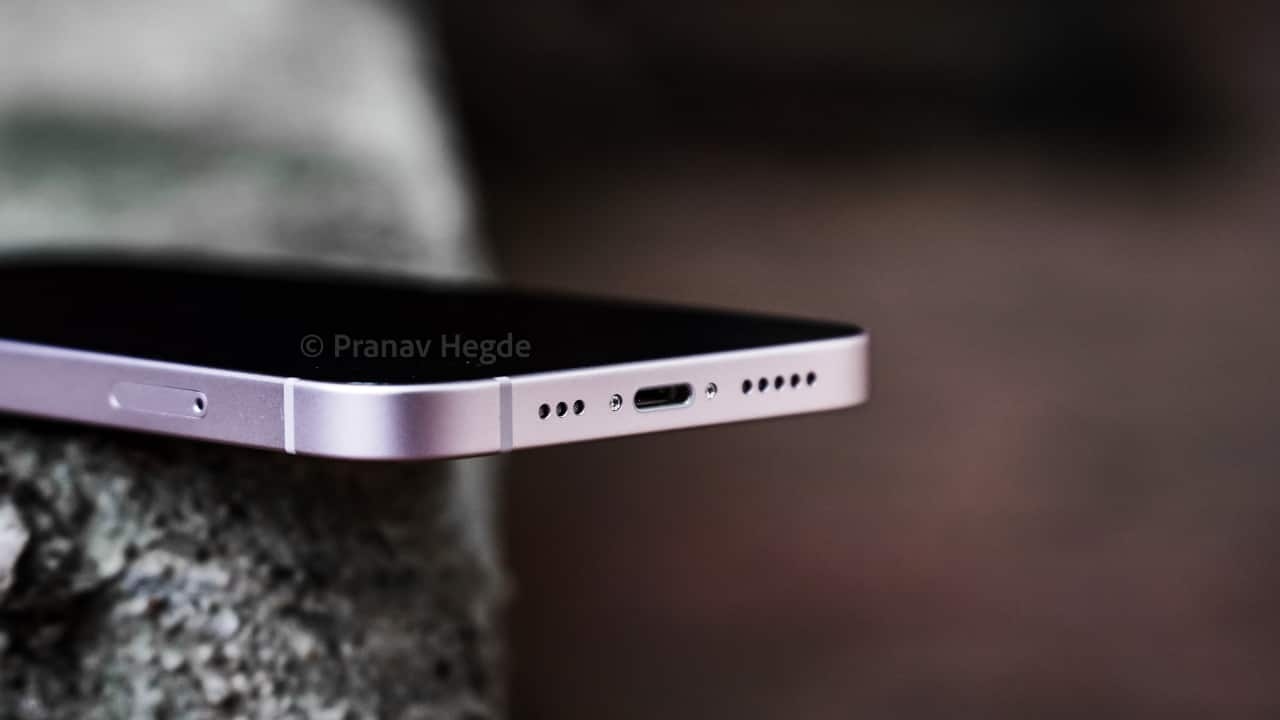 The iPhone 13 series continues to feature a Lightning port at the bottom edge.
The iPhone 13 series continues to feature a Lightning port at the bottom edge.That being said, Chinese smartphone companies have spoilt us with 65W fast charging support. Apple is unlikely to take that massive leap in fast charging over concerns of the tech deteriorating the battery health. Couple that with many using their iPhone devices for many years.
SoftwareApple is known for its best-in-the-industry software support. iPhone models launched four or even five years ago have got the latest iOS 15 software update. The new iOS update for iPhone 13 does not get a major design overhaul but introduces many important privacy features. It also comes with certain features that aim to enhance the user experience.
These include SharePlay, Live Text, iCloud Relay, Focus Mode, etc. With iOS 15, iPhone users can also share links for FaceTime with their friends and family using Android or Windows devices for an audio/ video chat. With Focus Mode, users can switch to a particular profile for getting notifications and alerts as per their preference. This particularly helps me when filing some feature stories or even reviews after switching to a customised “Work” Focus mode. The feature will only allow apps to send notifications if you have allowed them to do so. The same is the case with phone calls.
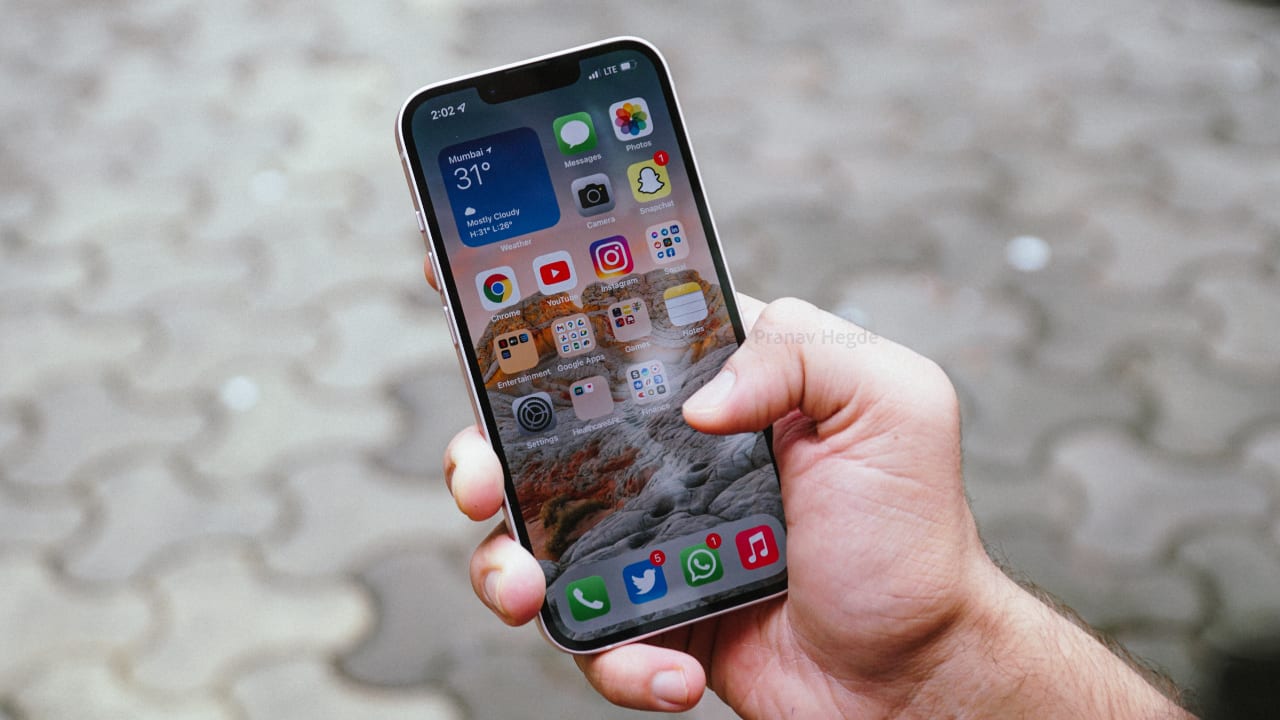
That being said, there have been some bugs here and there. Certain apps crashed randomly during my iPhone 13 review period. The keyboard too froze at times and worked only after locking and unlocking the iPhone. Apple also patched an update to fix the “Unlock with Apple Watch” bug that did not allow iPhone 13 users to unlock their device with their Apple Watch while wearing the mask. Although I did not experience the issue, Apple was quick to patch a fix for those who were. I can hope that the upcoming iOS 15.1 update, which is in beta currently, patches the mentioned bugs as well.
Looks like I belong to the rare breed of fortunate folks who can unlock their #iPhone13 via the Apple Watch while wearing a mask.I use this feature multiple times during the day and it has failed only twice in the past 8 days. pic.twitter.com/SSmWEEvyLz — Pranav (@PranavHegdeHere) September 29, 2021Design and Display
Not a lot has changed on the outside. Actually, a couple of things have. First, the notch is smaller by 20 percent. Apple shifted the earpiece speaker to the top bezel, which helped make the notch slightly smaller. For some odd reason, Apple has not utilised the more screen estate at the top to show the battery capacity percentage. This could be to maintain uniformity across all iOS 15 devices but have an option for the iPhone 13 would have been nice. While the width has narrowed down, the notch is slightly taller this time. It continues to house the Face ID sensors and the 12MP TrueDepth camera sensor.

The iPhone 13, much like the iPhone 12, has flat aluminium edges which curve on the corners. While I find it comfortable to hold the sort-of boxy sides, a couple of friends have complained. If you are coming from an iPhone 11 or any older iPhone, you might take a while to adjust to the new design. If not, there’s always an option to put on a silicone case on the device. Otherwise, you can choose to show off one of the five colour options available. Our iPhone 13 review unit has this gorgeous Pink colour, which might look like a light shade of Rose Gold. Alternatively, you get to pick among Starlight, Midnight, PRODUCT [Red] and Blue. The rear panel has a glossy finish and if you would like to hide those fingerprint smudges, it would be best to choose between the Pink or Starlight colours.
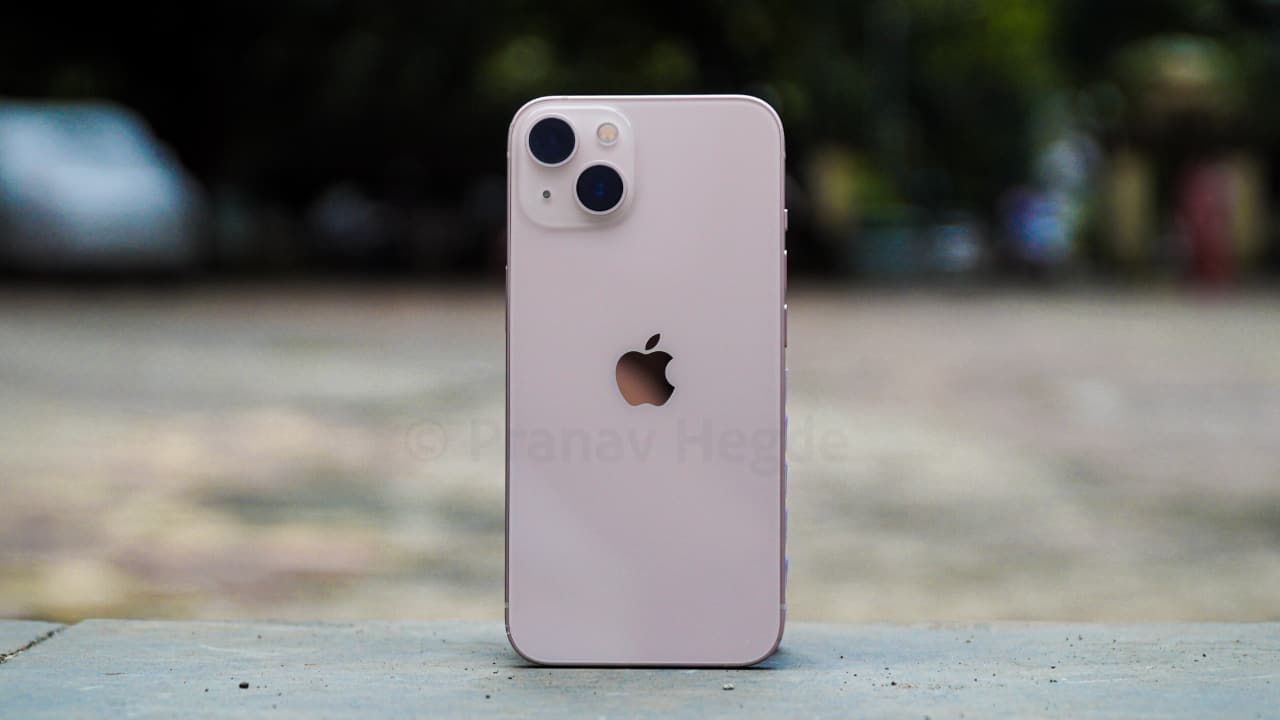
While the form factor remains the same, the iPhone 13 is slightly heavier on paper at 173 grams. Despite the 10 grams addition over the iPhone 12, you are unlikely to notice any major difference. It is also slightly thicker at 7.65mm but continues to be among the thinnest phones out there. The 6.1-inch iPhone 13 feels like a perfect size for those who want a big screen without having to hold a big, bulky phone.
While we are at the display bit, the OLED Super Retina XDR screen is brighter than the iPhone 12 and now comes with 800 nits of brightness. While consuming HDR content, the screen brightness peaks at 1200 nits. The colour accurate, vibrate display does not give any issues, even when watching content outdoors. As mentioned earlier, the vanilla iPhone 13 misses out on the 120Hz ProMotion display that is reserved for the iPhone 13 Pro and iPhone 13 Pro Max. It would have been nice to see Apple bring the tech on the entry-level iPhones. While iOS animations do not make it feel like a 60Hz screen, users coming from a 120Hz phone will notice a slight difference.
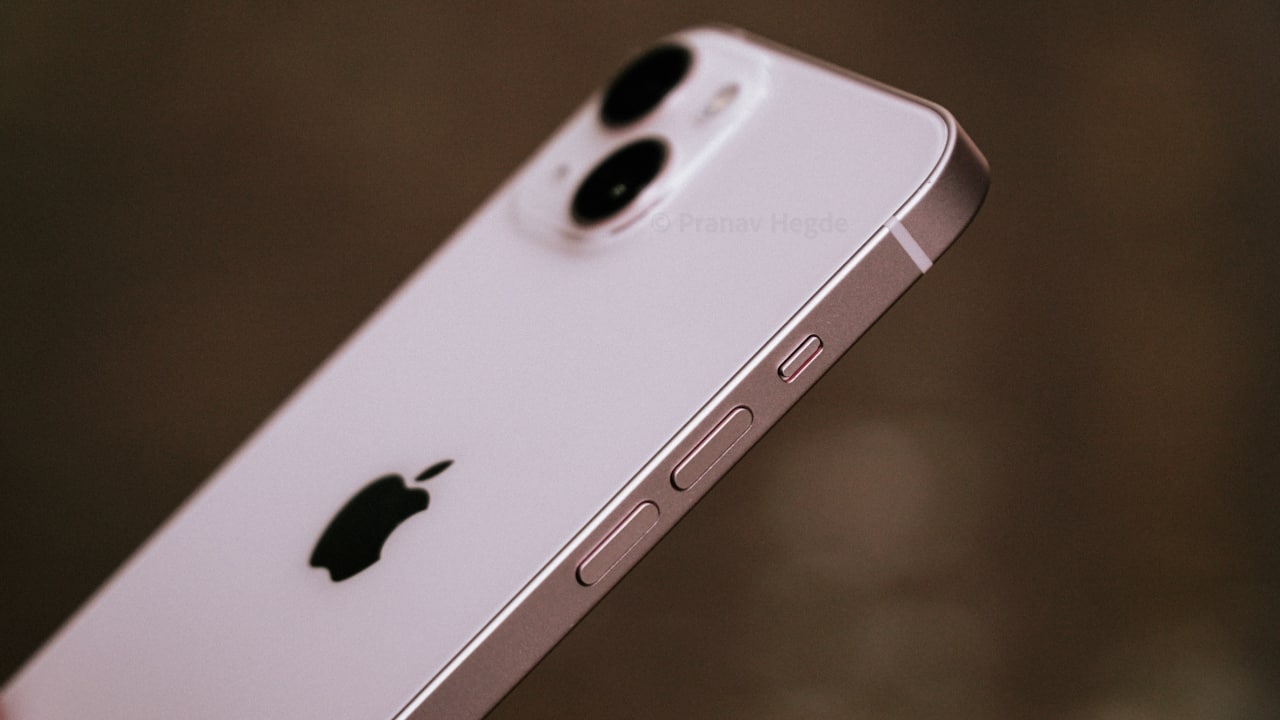 The volume keys and the silent switch are located on the left side of the iPhone 13's aluminium frame
The volume keys and the silent switch are located on the left side of the iPhone 13's aluminium frameThe new iPhone 13 models also come with an IP68 rating and Ceramic Shield claiming to offer up to 4x better drop resistance. While I cannot test the claim at its best, I can tell you that the screen (and the iPhone itself) seem to be durable. I dropped the phone thrice (accidentally, of course) during the iPhone 13 review period, with one of the falls being as high as 4.5 feet. Prayed to all possible gods as I picked up the device every time only to find that it was without scuffs and scratches. Call it luck or solid build quality, the iPhone 13 survived those accidental drops. That being said, I do not know if there will be any long-term implications and it would be best to not try this yourself.
Coming to the rear panel, the most noticeable change on the iPhone 13 is the camera module design. Apple has switched the position of the lenses on the dual-camera setup of the iPhone 13. This is not just to make the iPhone 13 look different from the iPhone 12 or the iPhone 11 but because the camera sensor size is bigger on the new iPhone models. While we are at it, let’s get to the most significant upgrade on the iPhone 13 - the camera.
CameraIf you look at the spec sheet, you might think that the iPhone 13 camera is the same as the iPhone 12. However, it is on the inside where you will see the upgrades. The iPhone 13 continues to feature a 12MP dual-camera setup. However, the sensor size is bigger compared to previous models. In fact, the difference is such that Apple had to place both the sensors diagonally to adjust them within the camera module.
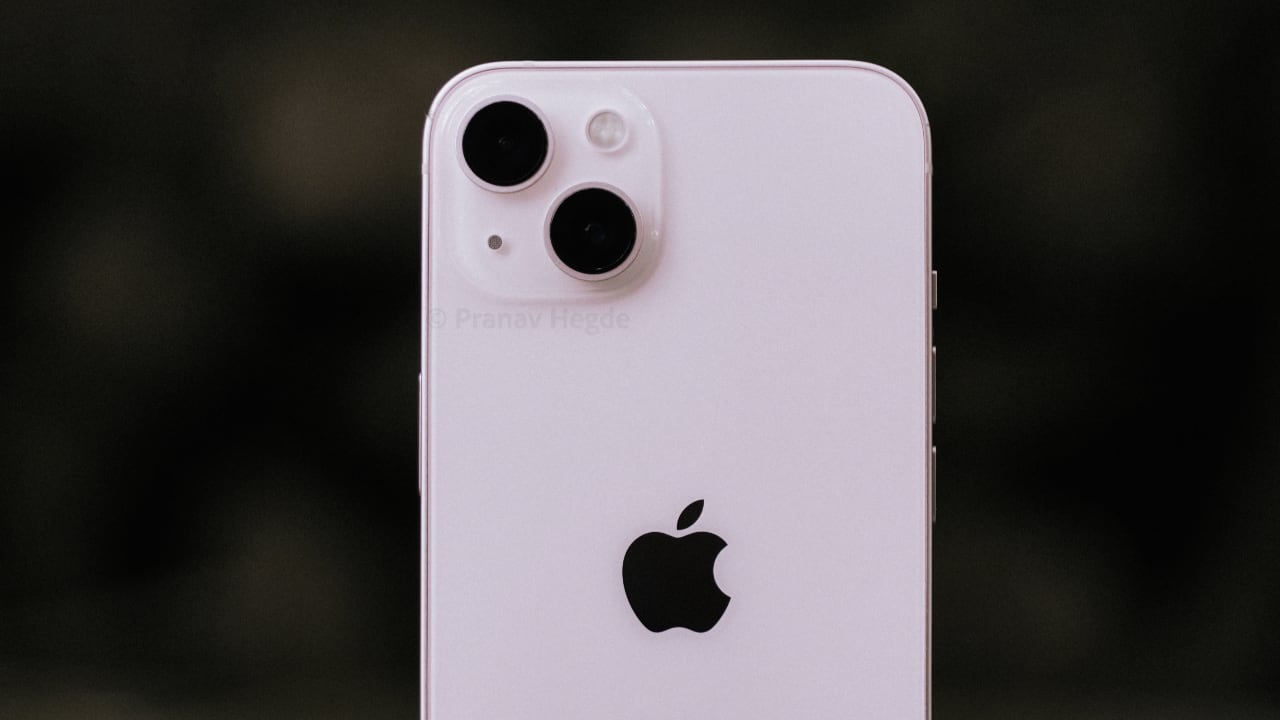
The main 12MP camera with 1.7 µm pixels has an f/1.6 aperture, resulting in excellent lowlight performance. Since the sensor is larger, it also helps capture better details in both day and night shots. The colours are very close to accurate but the overall image is slightly warm. It has great sharpness levels and the dynamic range is excellent as well. The main camera also supports sensor-shift optical image stabilisation, which was exclusive to the iPhone 12 Pro Max last year. Instead of the lens, the whole sensor moves in the opposite direction to tackle shake while shooting images or recording videos.
Like we mentioned in our iPhone 12 review, the iPhone 13 camera also suffers from lens flare. You are likely to see green dots when you are shooting directly at something with high luminance or maybe a golden flare if a warm source of light is right above you. This does not happen all the time but can be annoying when you try and adjust the shot to avoid the flare and miss out on the moment.
Portrait mode on the iPhone 13 continues to be my favourite among all smartphones. There are several portrait lighting modes like natural, studio light, contour light, stage light mono, high-key mono, etc. on the front and rear camera. Stage light mono and High-key mono continue to remain as my favourite portrait modes on the iPhone 13.
The 12MP ultrawide camera has an f/2.2 aperture. While the camera performance has improved with lesser noise and slightly better details, it falls slightly behind in mostly all aspects compared to the main camera. Its advantage though is that you get a 120-degrees wider frame and the colour science also matches that of the main camera. However, the images in lowlight using night mode aren’t the best. Not to say it is bad but the main camera clicks far better low light/ night mode images. Also, unlike the iPhone 13 Pro models, the standard iPhone 13 ultrawide camera does not get autofocus, which means you cannot click close-up macro shots.
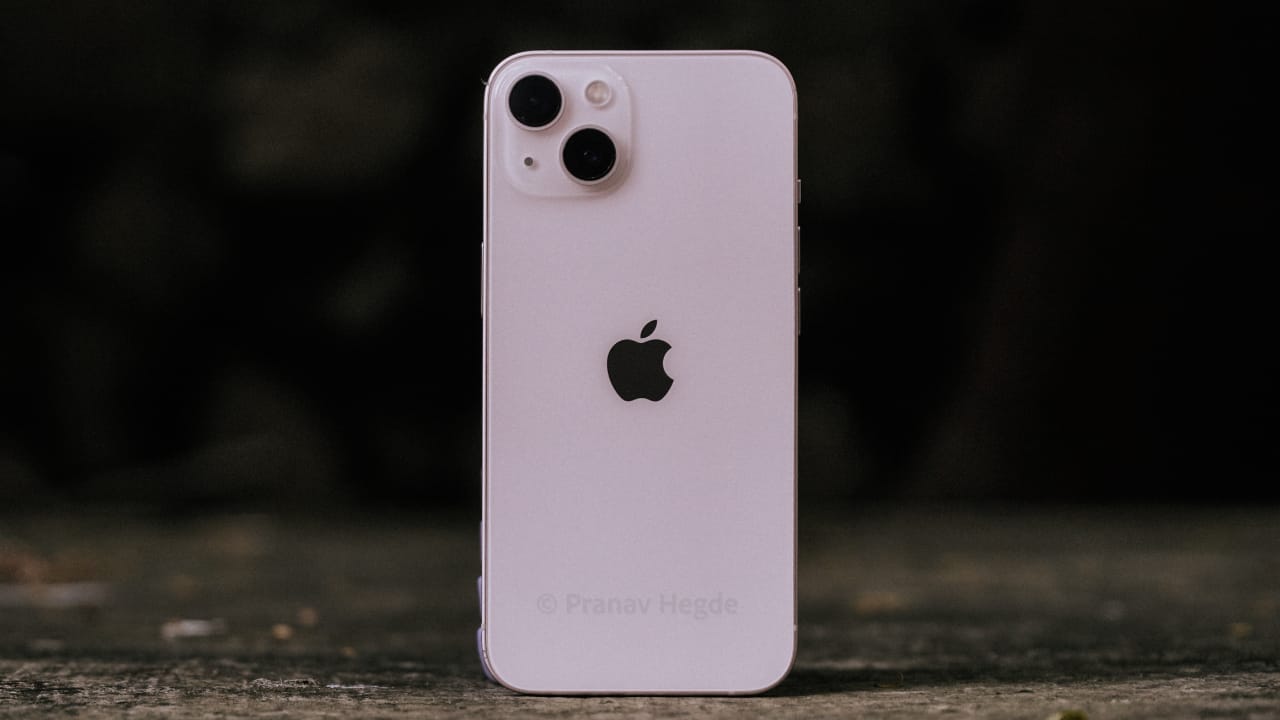
Apple has also upped the game with a couple of iPhone 13 camera features. One of the new additions is Photographic Styles. There are five styles to choose from - Standard, Rich Contrast, Vibrant, Cool and Warm. The Standard style typically offers real colours, whereas the Rich Contrast style offers Google Pixel-like contrasty colours. When using Vibrant, you get slightly more saturated colours. Lastly, Cool and Warm styles, like the names suggest, offer cooler and warmer tones.
Apple says the five Styles are not filters as they preserve the colours of the skin tones while making intelligent adjustments elsewhere. While a part of the claim is true, we found some situations wherein the skin tone’s colour changed slightly in the Warm and Cool Photographic Styles. Keep in mind that once you click a photo using a preferred Style, you cannot edit it to the Standard or any other Style. The iPhone 13 camera app will also set the selected Style as default every time you open the app.
The second new highlight feature is Cinematic Mode. It essentially keeps the subject in focus and blurs the background while recording the video. We have seen something similar on some Android phones. However, the iPhone automatically switches between subjects when the closest one is looking into the camera. Focus tracking is cool but there were instances where we noticed a slight delay in the autofocus. Again, this is a first-generation feature and we can hope that by next year, Apple fine-tunes Cinematic Mode. What makes the feature even better is that users can edit and make adjustments in the recorded Cinematic Mode video in post-processing. This includes adjusting the focus and even the bokeh levels. Oh, by the way, Cinematic videos can be shot only at 1080p and 30FPS on the iPhone 13. The camera can also shoot videos in 4K60FPS across the main, ultrawide and front camera.
The iPhone 13’s front camera has the same 12MP sensor found on the iPhone 12. Unlike many Android smartphones out there, the iPhone 13 front camera does not mess with the skin tones, resulting in accurate colours. It also does not smoothen the skin. That being said, the lowlight performance is quite okay, even with the on-screen flash. Click here or on the Flickr slideshow below to check some of the iPhone 13 camera samples we shot during our review period.
VerdictComing to the most important question: Is iPhone 13 the best iPhone for you? Should you consider an upgrade from an iPhone 12, iPhone 11 or any other older iPhones?
The iPhone 13 does get major upgrades with a bigger battery. Not just that, the A15 Bionic chip under the hood is the fastest you will find on any phone in its price range, thus offering excellent performance. With such great power also comes the great responsibility of ensuring better efficiency levels. And the iPhone 13 does not disappoint. It offers the best-in-class battery life. As mentioned above, it can offer nearly 9.5 hours of SoT on a single charge and no Android flagship smartphone now comes close to the iPhone 13 in terms of battery life.
The biggest upgrade, though, is in terms of the camera. You get bigger sensors that shoot better, sharp images during the day and night. Also, Cinematic mode and Photographic Styles are fun to play with. While the former still needs some tuning, one can use it to shoot some cool videos for Instagram Reels.
While the display size and features are more or less the same, it is slightly brighter than the iPhone 12 and the iPhone 11. You also get a slightly smaller notch. It would have been nice had the iPhone 13, 13 mini also got the ProMotion 120Hz refresh rate tech that is exclusive to the Pro models. The standard models also do not get the additional telephoto camera, which again is exclusive to the Pro models.
iPhone 12 users might not see the iPhone 13 as a major upgrade overall. We feel iPhone 12 users can continue using their devices. They can upgrade only if they want an improved camera or better battery life.
Users of iPhone 11 or other older iPhones can definitely consider upgrading to the iPhone 13. The camera, enhanced battery life, improved display, powerful performance and even a different design compared to an older iPhone make the iPhone 13 a worthy upgrade.
At a starting price of Rs 79,900, you not only get the above-mentioned upgrades but also a new design that is much lighter in weight. Also, Apple has ditched the 64GB models and launched the iPhone 13 series with 128GB as standard for the base model. In case you want more storage, the iPhone 13 256GB variant can be bought for Rs 89,900, whereas the 512GB variant can be purchased for Rs 1,09,900.

Discover the latest Business News, Sensex, and Nifty updates. Obtain Personal Finance insights, tax queries, and expert opinions on Moneycontrol or download the Moneycontrol App to stay updated!
Find the best of Al News in one place, specially curated for you every weekend.
Stay on top of the latest tech trends and biggest startup news.